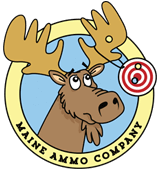The .357 SIG pistol cartridge (designated as the 357 Sig by the SAAMI and 357 SIG by the C.I.P. or 9×22mm in unofficial metric notation) is the product of Swiss–German firearms manufacturer SIG Sauer, in cooperation with American ammunition manufacturer Federal Cartridge. While it is based on a 10mm auto case shortened and necked down to accept 0.355-inch (9.0 mm) bullets, the .357 SIG brass is slightly longer than .40 S&W by 0.009 in (0.23 mm) to 0.020 in (0.51 mm) total. .40 S&W brass should not be used in a gun chambered for .357 SIG as it can cause damage to the firearm and serious injury or death to the shooter. The cartridge is used by a number of law enforcement agencies and has a good reputation of accuracy.
Developed in 1994, the new cartridge was named “357” to highlight its purpose: to duplicate the performance of 125-grain (8.1 g) .357 Magnum loads fired from 4-inch (100 mm)-barreled revolvers, in a cartridge designed to be used in a semi-automatic pistol with greater ammunition capacity than a revolver. Performance is similar to the 9×23mm Winchester.
Other than specialized competition cartridges like the 9×25mm Dillon (1988), which necked a 10mm Auto case down to a 9mm bullet, the .357 SIG (1994) was the first modern bottleneck commercial handgun cartridge since the early 1960s, when Winchester introduced a .257 caliber round based on the .357 Magnum, the now obsolete .256 Winchester Magnum (1960). Then Remington introduced the unsuccessful .22 Remington Jet (1961), which necked a.357 Magnum case down to a .22 caliber bullet, and the .221 Remington Fireball (1963), a shortened version of their.222 Remington. Soon after the .357 SIG, other bottleneck commercial handgun cartridges appeared: the .400 Corbon (1996), necking the .45 ACP down to .40 caliber; the .440 Corbon (1998), necking down the .50 AE to .44 caliber; the .32 NAA (2002), necking the .380 ACP down to .32 caliber; and the .25 NAA (2004), necking the .32 ACPdown to .25 caliber.

